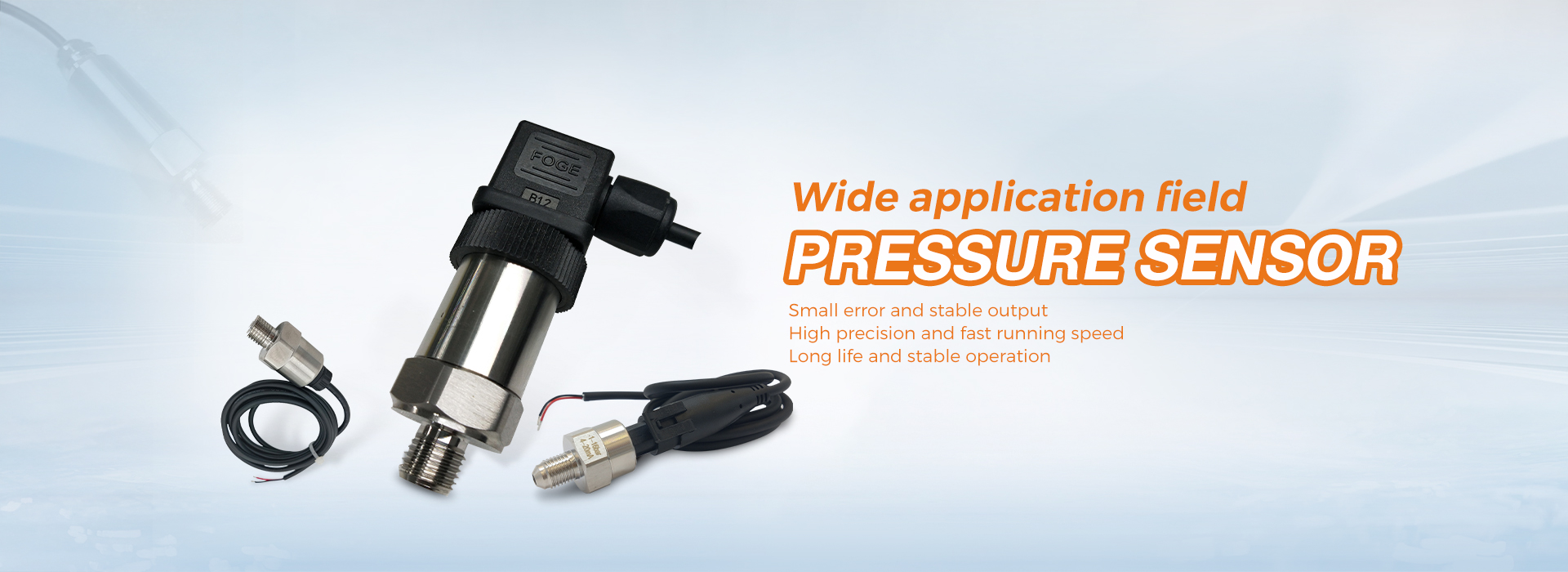Pressure sensor is the most commonly used sensor, which is widely used in various industrial automation environments, involving water conservancy and hydropower, railway transportation, intelligent buildings, production automation, aerospace, military, petrochemical, oil wells, electricity, ships, machine tools, pipelines, etc. many industries.According to different working principles, pressure sensors can be divided into the following types:
Monocrystalline silicon sensor
High-performance single-crystal silicon pressure sensor, using electromagnetic excitation and electromagnetic vibration pickup, the output is frequency signal, strong anti-interference ability, good stability, no need for A/D conversion, can measure both absolute pressure and differential pressure .
Capacitive Pressure Sensor
Capacitive transmitters have a variable capacitance sensing component. The sensor is a completely closed assembly. Process pressure, differential pressure is transmitted to the sensing diaphragm through the isolating diaphragm and filling liquid silicone oil to cause displacement. The capacitance difference between the sensing diaphragm and the two capacitor plates is converted into an electrical signal output by a two-wire system of (4-20) mA by electronic components.
Diffusion Silicon Pressure Sensor
Diffusion silicon pressure sensor is that the external pressure is transmitted to the sensitive chip through the stainless steel diaphragm and the inner sealed silicone oil, and the sensitive chip does not directly contact the measured medium. It has high sensitivity output, good dynamic response, high measurement accuracy, good stability, and easy miniaturization, but it is easily affected by temperature.
Ceramic pressure sensor
Ceramic is recognized as a highly elastic, corrosion-resistant, wear-resistant, shock- and vibration-resistant material.The thermal stability characteristics of ceramics and its thick film resistance can make its working temperature range as high as -40 ~ 135 ℃, and it has high precision and high stability of measurement.The degree of electrical insulation is >2kV, the output signal is strong, and the long-term stability is good. Has excellent linear accuracy, hysteresis and reliability, cost-effective。In principle higher ranges are also easier to achieve. These two sensors are widely used in aerospace, aviation, navigation, petrochemical, power machinery, biomedical engineering, meteorology, geology, seismic measurement and other fields.
In addition, the sensors used in general pressure transmitters (different from differential pressure transmitters) are commonly used:Diffused silicon sensor, ceramic piezoresistive sensor, ceramic capacitive sensor, single crystal silicon sensor, etc.
This sensor can only measure gauge pressure or absolute pressure, and they also have their own shortcomings.The sensors used in different occasions are also different. For example, the general small-range pressure transmitter needs to use a ceramic capacitive sensor, and the stability and accuracy will be higher than others; while the general ultra-large range is limited by the production process. , usually more ceramic piezoresistors are used;For diffused silicon sensors, general oil-filled diffused silicon sensors are more suitable for technical improvements such as temperature compensation, and are also outstanding in stability and overload capacity.
The differential pressure sensor is filled with silicone oil or inert gas, which is generally a capacitive sensor. Of course, sensors of other technologies are also filled with inert liquid or inert gas. Its function is to apply the pressure evenly to the pressure-sensitive diaphragm.
Post time: Feb-17-2022



